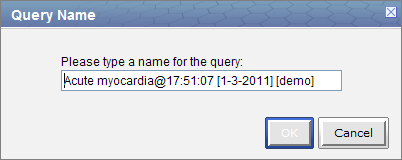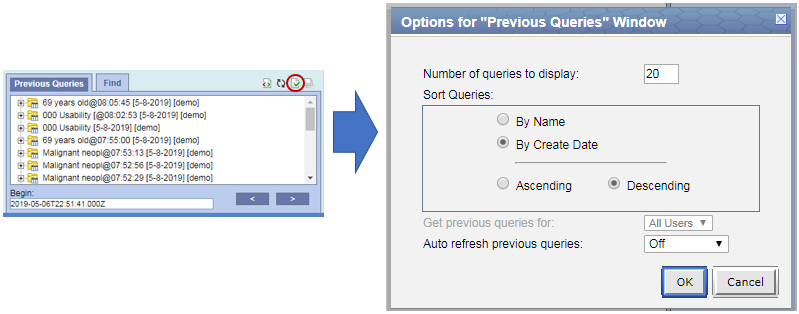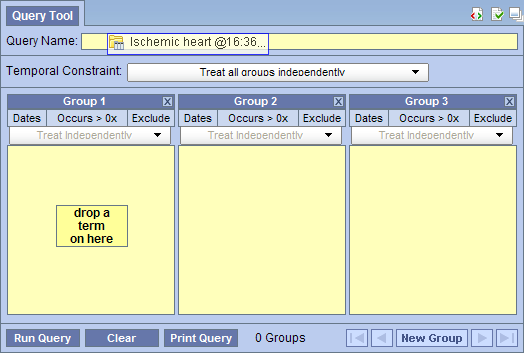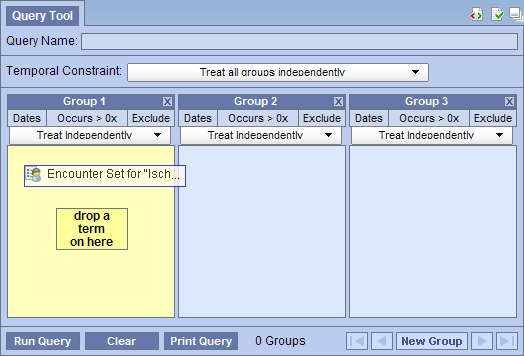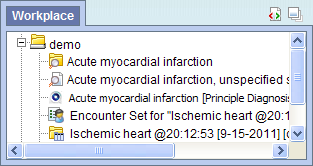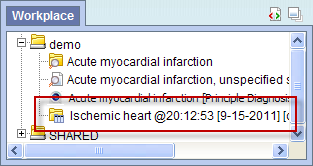Page History
...
Users can rename a previous query from the list by selecting Rename from the popup menu.
...
1. Using the right mouse button, click on the Previous Query to be renamed.
...
2. A pop-up menu will open.
...
3. Select Rename from the menu.
...
4. The rename query dialog box will open.
...
5. Enter the new name of the previous query and click on the OK button.
...
6. The previous query will now display in the view with the new name.
NOTE: |
| Anchor | ||||
|---|---|---|---|---|
|
Users can rename a previous query from the list by selecting Delete from the pop-up menu.
...
1. Using the right mouse button, click on the Previous Query to be deleted.
...
2. A pop-up menu will open.
...
3. Select Delete from the menu.
...
4. A message box will open asking if you are sure you want to delete the query.
...
5. Click on the OK button to delete the query
WARNING: |
| Anchor | ||||
|---|---|---|---|---|
|
Users can refresh the list of previous queries from the list by selecting Refresh All from the pop-up menu.
...
1. Using the right mouse button, click on any of the previous queries in the list.
...
2. A pop-up menu will open.
...
3. Select Refresh All from the menu.
...
4. The list of previous queries and their status will be refreshed.
| Anchor | ||||
|---|---|---|---|---|
|
The third right top button panel ( , the red circle in the following image) in the 'Previous Queries' prompts an Options window. Users can define how many previous queries to display, the order in which they will appear in the list, and auto refresh setting.
| Anchor | ||||
|---|---|---|---|---|
|
| Anchor | ||||
|---|---|---|---|---|
|
The Maximum number of queries to display defines how many previous queries will be visible in the 'Previous Queries'. Once the maximum number is reached the oldest query will no longer appear in the view.
TIP: |
| Anchor | ||||
|---|---|---|---|---|
|
...
6.4.2.2 Sort Queries
6.4.2.2.1 Sort by Name
Selecting to sort By Query Name will sort the queries in the 'Previous Queries' alphabetically by the name of the query. Once you select to sort by name, you need to define whether or not it will be in ascending or descending order.
Ascending: queries are displayed in alphabetical order with the beginning of the alphabet at the beginning of the list. (A to Z)
Descending: queries are displayed in alphabetical order with the beginning of the alphabet at the end of the list. (Z to A)
| Anchor | ||||
|---|---|---|---|---|
|
...
6.4.2.2.2 Sort by Create Date
Selecting to sort By Create Date will sort the queries in the 'Previous Queries' by the date and time the query was created. Once you select to sort by the creation date, you need to define whether or not it will be in ascending or descending order.
Ascending: displays the oldest query first.
Descending: displays the newest query first.
NOTE: |
6.4.2.3 Auto Refresh
| Anchor | ||||
|---|---|---|---|---|
|
NOTE: |
| Anchor | ||||
|---|---|---|---|---|
|
| Anchor | ||||
|---|---|---|---|---|
|
Different parts of the previous query can be dragged and dropped (copied) from the 'Previous Queries' to other views in the i2b2 Web Client.
...
6.5.1.1 Previous Query
Associated with each previous query ( / ) are the items used to run the query, any constraints that were defined, and the results. A previous query can be added to other views by dragging the previous query name from 'Previous Queries' to one of the following views.
'Query Tool'; drop in the panel or Query Name.
- 'Workplace' panel; drop in a user or shared folder
6.5.1.2 Patient Set
A specific set of patients can be added to other views by dragging the Patient set ( ) from 'Previous Queries' to one of the following views.
'Query Tool'; drop in the panel.
- 'Workplace' panel; drop in a user or shared folder
6.5.1.3 Encounter Set
A specific set of encounters (visit list) can be added to other views by dragging the Encounter Set ( ) from 'Previous Queries' to one of the following views.
'Query Tool'; drop in the panel.
- 'Workplace' panel; drop in a user or shared folder
| Anchor | ||||
|---|---|---|---|---|
|
The 'Query Tool' is designed to simplify the process of retrieving information from the database associated to the i2b2 Web Client.
Within the 'Previous Queries' there are several items that can be used in the 'Query Tool' to run a query. The following sections explain how to add the previous query, patient set and encounter set to the 'Query Tool'.
| Anchor | ||||
|---|---|---|---|---|
|
Within the 'Query Tool', a previous query can be added to one of the following two locations.
Query Name field | The items and constraints from the original query will be used to create a new query. This information can be edited to make a new query or can be used as is to run the query again. |
Panel (Group) | Used within a new query (query-in-query). The information associated with the previous query can not be edited. Add additional search criteria (items) to be used in the new query. |
| Anchor | ||||
|---|---|---|---|---|
|
...
6.5.2.1.1 Add Previous Query to the Query Name (New Query)
1. Highlight the previous query ( / ) by clicking on the name of the query.
...
NOTE: |
| Anchor | ||||
|---|---|---|---|---|
|
...
6.5.2.1.2 Add Previous Query to the Query Name (Query-in-Query)
1. Highlight the previous query ( / ) by clicking on the name of the query.
...
3. The previous query will now display in the panel for Group 1.
| Anchor | ||||
|---|---|---|---|---|
|
...
6.5.2.2 Add Patient Set to the 'Query Tool'
1. Click on the plus sign ( ) next to the name of the previous query that contains the patient set.
...
5. The item will now display in the panel for Group 1.
| Anchor | ||||
|---|---|---|---|---|
|
...
6.5.2.3 Add Encounter Set to the 'Query Tool'
1. Click on the plus sign ( ) next to the name of the previous query that contains the encounter set.
...
5. The item will now display in the panel for Group 1.
| Anchor | ||||
|---|---|---|---|---|
|
Information in the workplace is related to the most common concepts and queries that an individual uses and in essence becomes their personal workplace.
| Anchor | ||||
|---|---|---|---|---|
|
...
6.5.3.1 Add Previous Query to 'Workplace' Panel
1. Highlight the previous query ( / ) by clicking on the name of the query.
...
4. The previous query will now appear in the workplace with the same name.
| Anchor | ||||
|---|---|---|---|---|
|
...
6.5.3.2 Add Patient Set to 'Workplace' panel
1. Click on the plus sign ( ) next to the name of the previous query that contains the patient set.
...
6. The Patient set will now appear in the workplace.
6.5.3.3 Add Encounter Set to 'Workplace' panel
1. Click on the plus sign ( ) next to the name of the previous query that contains the encounter set.
...
